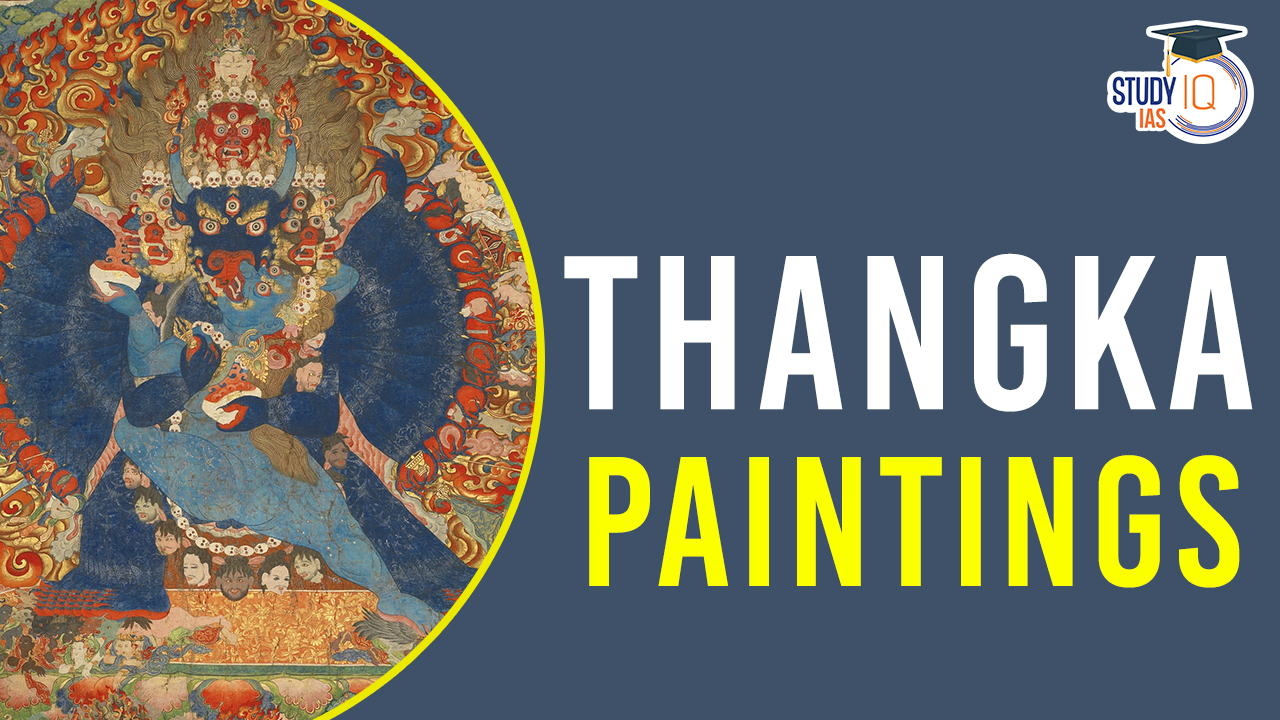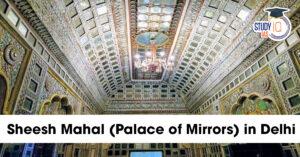Table of Contents
The term “Thangka,” derived from Classical Tibetan, eloquently translates to “thing that one unrolls.” These intricate works of art, also known as tangkas, thankas, or tankas, hold profound significance in the realm of Tibetan Buddhism. Typically crafted on cotton or silk appliqué, Thangka Paintings unfold scenes, mandalas, and representations of Buddhist deities, Bodhisattvas, or mythological narratives. This artistic tradition extends beyond the Tibetan plateau, flourishing in regions where Tibetan Buddhism has left an indelible mark, such as Mongolia, Ladakh, Sikkim, Arunachal Pradesh, and various parts of Himalayan India.
We’re now on WhatsApp. Click to Join
Thangka Paintings History
Rooted in the ancient Buddhist artistic heritage, Thangka Painting finds its early predecessors in Buddhist paintings found in locations like the Ajanta and Mogao Caves in China. These caves, housing early Tibetan fabric paintings, paved the way for the emergence of the distinct Thangka style. Commissioned by individuals seeking merit, these paintings were entrusted to monasteries, becoming integral parts of the religious and cultural tapestry.
Surviving from as early as the 11th century, Thangkas bear witness to the enduring legacy of this art form. Commissioned works, numbering at least 20 from the 11th and 12th centuries, serve as tangible links to a rich historical past.
Thangka Paintings Features
Size Variation
- Thangkas exhibit a wide range of sizes, from small, akin to half-length Western portraits, to expansive canvases measuring several meters. The choice of size often aligns with the intended use, with smaller ones catering to personal meditation and larger ones taking center stage in religious festivals.
Canvas and Medium
- Crafted on cotton or silk appliqué, Thangka Paintings employ a combination of pigments and water-soluble animal glue. This intricate mixture incorporates both mineral and organic pigments, resulting in a vibrant and enduring palette.
Unframed Tradition
- Unlike conventional Western paintings, Thangkas are traditionally left unframed. When not in use, they are carefully rolled up. This design choice reflects the portability of these artworks and the intention to preserve them for ceremonial displays.
Complex Compositions
- Thangkas are celebrated for their intricate and complex compositions. Scenes often feature numerous tiny figures, with the main deity positioned centrally. Symmetrical designs are common, creating a visually harmonious representation of Buddhist narratives.
Ritualistic Display
- Crafted for religious festivals, Thangka Paintings are displayed for limited periods on monastery walls during ceremonies. The ritualistic nature of their presentation underscores their role as sacred objects integral to the practice of Tibetan Buddhism.
Pigment and Material
- The pigments used in Thangkas are mixed with animal glue, creating a water-soluble medium. This meticulous combination ensures both the longevity of the painting and the preservation of its vibrant colors. The use of mineral and organic pigments contributes to the rich and diverse visual palette.
Spiritual Symbolism
- Thangkas often depict spiritual symbolism, with each element carefully chosen to convey specific meanings. Whether portraying Bodhisattvas, Buddhist deities, or mythological scenes, every detail holds significance in conveying the deeper teachings of Tibetan Buddhism.
Educational Purpose
- Beyond their aesthetic value, Thangka Paintings serve as educational tools, visually narrating the lives of significant lamas, deities, and Bodhisattvas. They become vehicles for conveying historical events and sacred teachings, making them integral to the transmission of Buddhist knowledge.
Meditation Aid
- Traditionally created with personal meditation or monastic study in mind, Thangkas serve as aids in spiritual contemplation. The detailed and intricate scenes invite viewers to delve into the narratives depicted, fostering a meditative experience.
Contemporary Adaptation
- In modern contexts, Thangka Paintings continue to adapt. While maintaining their traditional essence, they are also reproduced in various formats, including printed forms and poster sizes. This allows for broader accessibility and integration into diverse settings beyond traditional religious contexts.
Significance of Thangka Paintings
Beyond their aesthetic allure, Thangka Paintings serve as indispensable educational tools, offering insights into the lives of revered lamas, deities, and Bodhisattvas, as well as conveying historical events. “The Wheel of Life” (Bhavachakra), a quintessential Thangka, visually imparts the teachings of the Abhidharma (Art of Enlightenment).
In contemporary contexts, Thangka paintings endure as both decorative and devotional elements. Reproduced in printed forms and poster sizes, they maintain their role in rituals and ceremonies, becoming focal points for prayer requests. These spiritual canvases continue to guide practitioners on the path of enlightenment, epitomizing the symbiosis of art and spirituality within Tibetan Buddhism.
Thangka Paintings UPSC
Thangka paintings, rooted in Classical Tibetan tradition, depict Buddhist narratives and mythologies on cotton or silk appliqué. Emerging from ancient Buddhist art heritage, they found inspiration in caves like Ajanta and Mogao. Ranging in size from small to expansive, Thangkas use pigments mixed with animal glue for intricate, unframed compositions. Surviving since the 11th century, they serve as educational tools, portraying lives of lamas and deities. With spiritual symbolism, these paintings aid meditation and adapt to contemporary formats, remaining vital in Tibetan Buddhism. Beyond aesthetics, they endure as decorative and devotional elements, guiding practitioners on the path to enlightenment.


 Sheesh Mahal in Delhi Restoration, Archi...
Sheesh Mahal in Delhi Restoration, Archi...
 Bonalu Festival 2025: Date, History, Rit...
Bonalu Festival 2025: Date, History, Rit...
 Puri Jagannath Rath Yatra 2025, History,...
Puri Jagannath Rath Yatra 2025, History,...





















